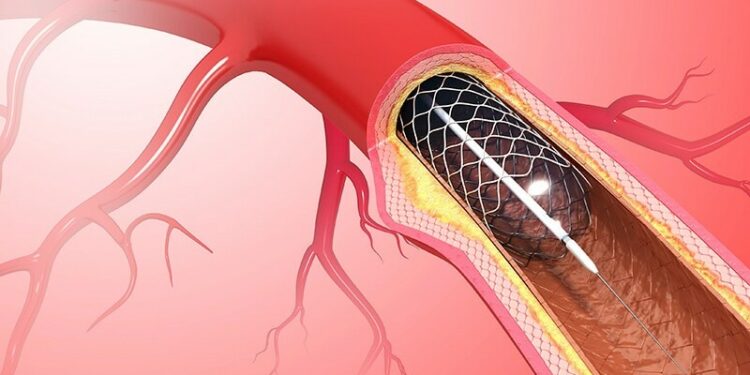[ad_1]
TOPLINE:
Thoracic endovascular aortic repair (TEVAR) effectively treats blunt traumatic aortic injury (BTAI), with acceptable long-term survival, low reintervention rates, and early diagnosis of manageable complications with timely intervention.
METHODOLOGY:
- This 20-year retrospective study (2001-2021) analyzed 95 patients (median age, 42 years; 84% men) who underwent TEVAR for BTAI at four Swedish trauma centers using data from the Swedish vascular and trauma registries.
- Data for a median follow-up period of 6.1 years were extracted from CT imaging and medical records.
- The primary outcome measures included 30-day and long-term survival rates after TEVAR for BTAI, reintervention rates, procedural complications at multiple time intervals, and aortic-related mortality.
TAKEAWAY:
- The 5-year, 10-year, and 15-year survival rates were 68%, 64%, and 57%, respectively.
- A total of 7% deaths were aortic-related. The 30-day mortality rate was 16%, with traumatic brain injury (40%) being the most common cause of early deaths followed by aortic-related causes (33%).
- Reinterventions, including restenting, coiling, or graft explantation, occurred in 16% patients within 18 months after the primary procedure.
- Procedural complications included access-related issues (thrombosis, bleeding, and pseudoaneurysms) in 10% patients, with 11% requiring open surgery and 20% requiring a hemostatic adjunct.
IN PRACTICE:
“TEVAR is an effective treatment for BTAI, with low rates of procedure related complications and overall aortic related mortality. The short term survival is closely associated with concomitant injuries, especially TBI [traumatic brain injury], whereas the long term outcome is acceptable with most complications warranting re-intervention being identified during the first two years after index treatment,” the authors wrote.
SOURCE:
The study was led by Victor Mill, Karolinska Institutet, Stockholm, Sweden, and was published online on November 13, 2024, in the European Journal of Vascular & Endovascular Surgery.
LIMITATIONS:
The study lacked a control group, and the outcomes of nonoperative patients were not assessed. The small sample size limited the analysis of long-term effects such as cardiac remodeling and hypertension. Variations in treatment protocols and stent grafts may have introduced bias, and some variables, such as the nature of the injury and patient population, in the dataset were incomplete.
DISCLOSURES:
The study was supported by grants from Mats Klebergs Stiftelse and a private donation from Kjell Sten. The authors reported no conflicts of interest.
This article was created using several editorial tools, including AI, as part of the process. Human editors reviewed this content before publication.
[ad_2]
Source link : https://www.medscape.com/viewarticle/long-term-outcomes-endovascular-repair-aortic-injury-2024a1000m0r?src=rss
Author :
Publish date : 2024-12-05 05:48:23
Copyright for syndicated content belongs to the linked Source.

